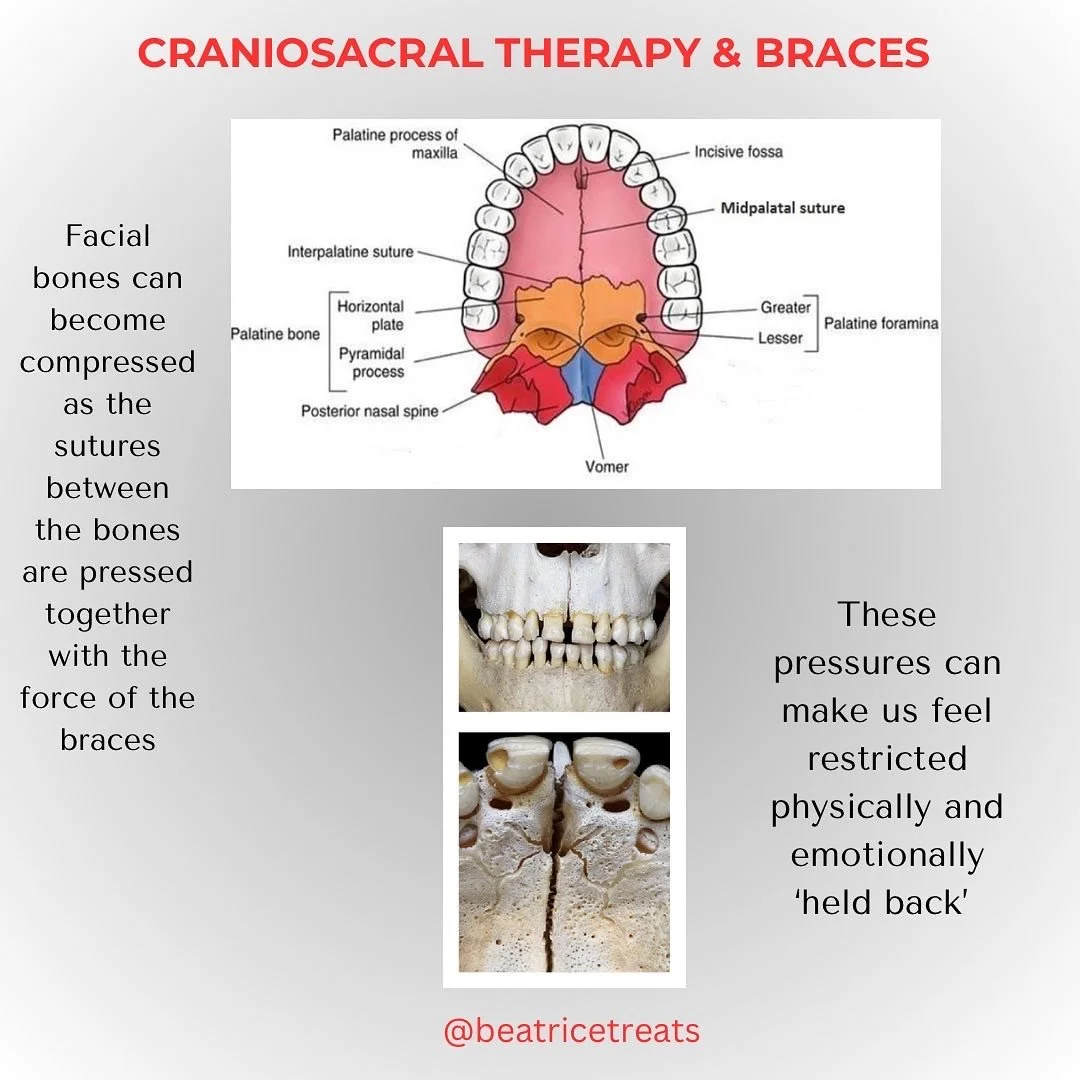Around 200,000 people get braces every year in the UK, in fact they’ve become pretty trendy in recent years. Whilst they’re a lot more accepted than they used to be, they can certainly leave their mark on the Craniosacral system. In people who wore braces as a child or adult, the skull and facial bones will often feel tightly compressed, and the Craniosacral system will often feel very contracted or ‘pulled inwards’. Braces pull together the teeth, jaw and skull bones and narrow the upper palate. The sutures between the maxilla bones and all the other facial bones can become compressed resulting in the restriction of the CSF fluid within the hydraulic Craniosacral system (which is produced in the ventricles of the brain, expanding as it fills and contracting as the fluid empties). The cerebrospinal fluid pumps and the subarachnoid spaces in the skull, and along the spine where the CSF flows, can become restricted and its job of nourishing and cleansing impaired.
Physically this can feel very taught, and emotionally a person may often feel as if they are being held back or restricted in some way, or as if they are constantly having to push against something or can’t quite breathe and expand fully, and these feelings can be reflected in other areas of their lives. In fact if braces are fixed when the Craniosacral system and its pumps are in a state of contraction, it can become locked in this state, and likewise if they are applied in a state of expansion, resulting in the rest of the body becoming stuck in certain patterns, twists or imbalances, causing pain in the jaw, pelvis, skull and upper palate.
Dr. Upledger notes a case of a 16 year old girl whose scoliosis was compounded by her braces as her skull bones and upper palate were being compressed: “The sphenoid bone is one of the prime movers of the craniosacral system. When the bone's mobility is restricted, the craniosacral system tries very hard to compensate for the dysfunction, but it's seldom fully successful.” As soon as her braces were loosened they were able to work with and make progress with straightening the scoliosis, before the braces were re-applied.
Ideally before braces go on, any tensions in the system should be released, including imbalances in the pelvis which are often reflected in the skull and jaw. Then as the braces are adjusted over the following months, CST should be continued to keep the system in balance and the cerebrospinal fluid flowing, and to maintain the straightening effects of the braces themselves, which can reverse once they’ve been removed if the rest of the body has moved out of alignment to compensate.




